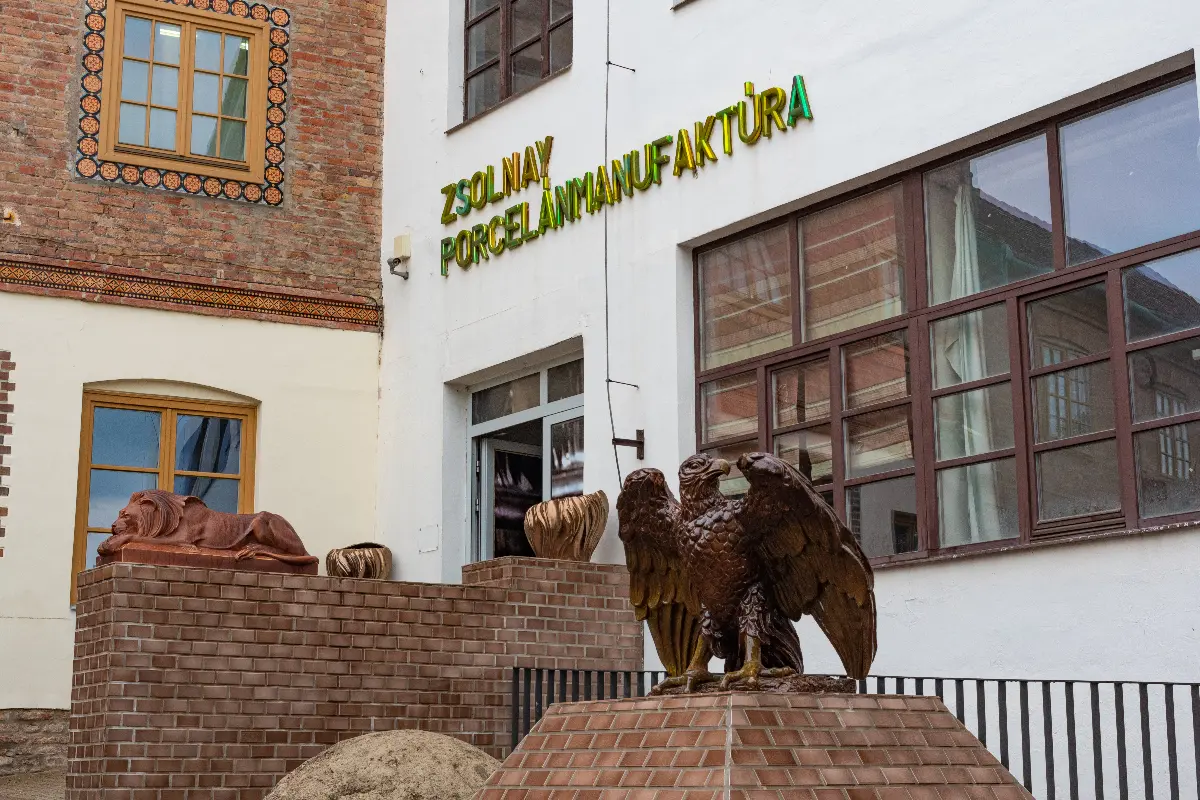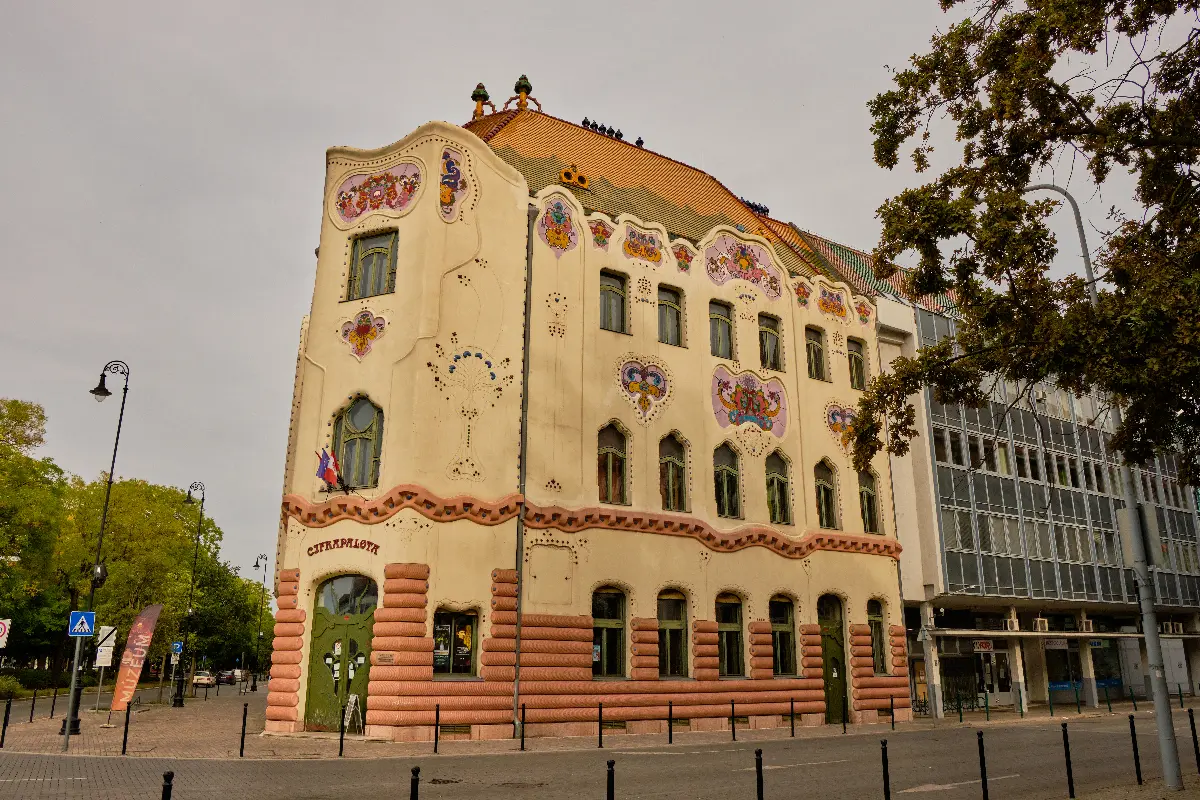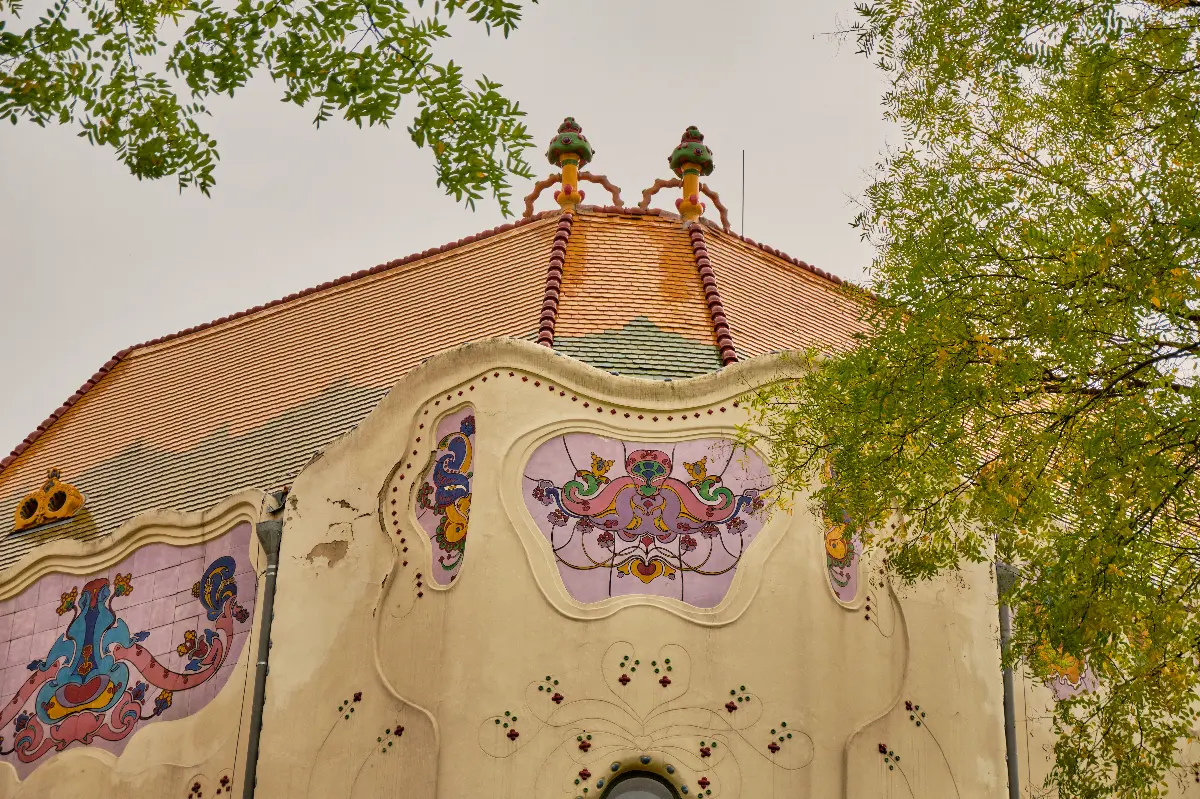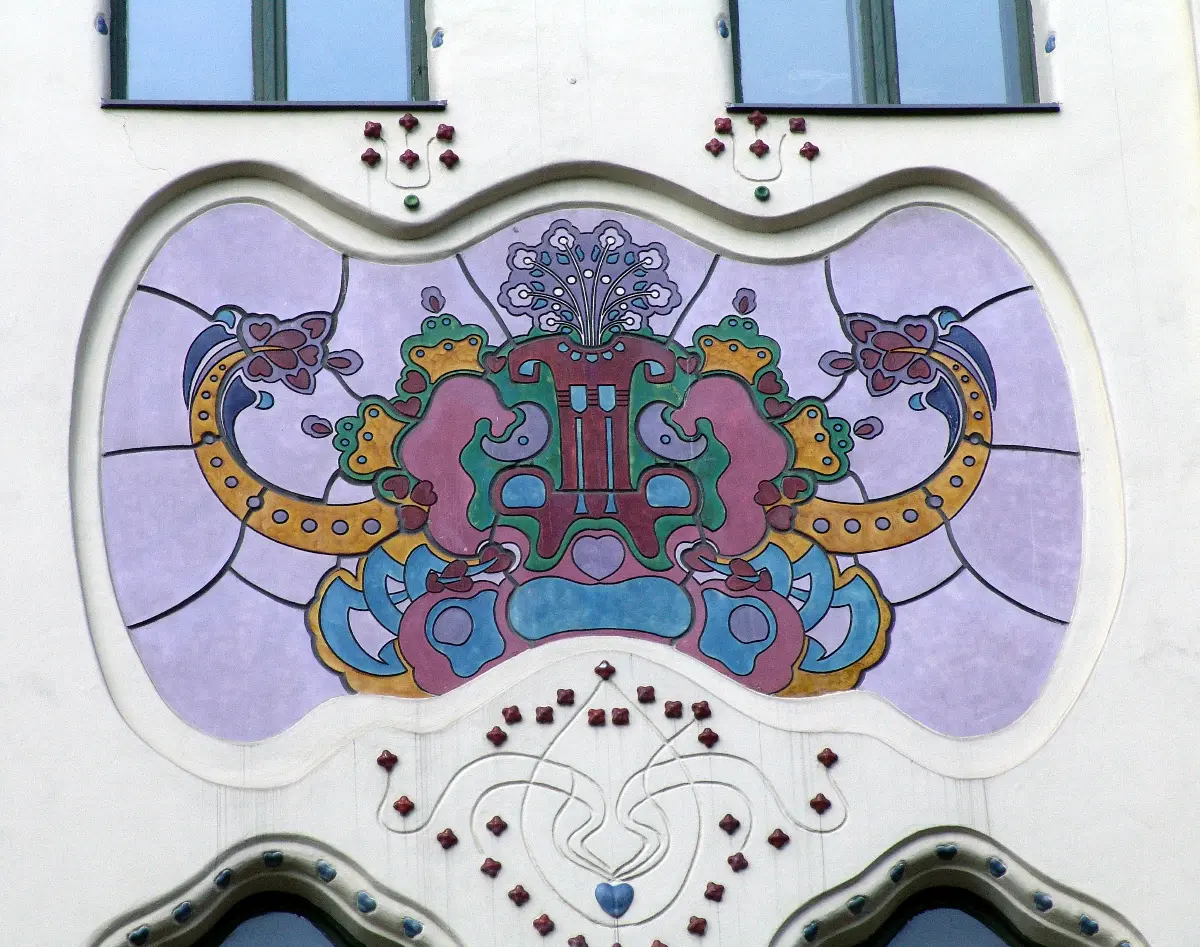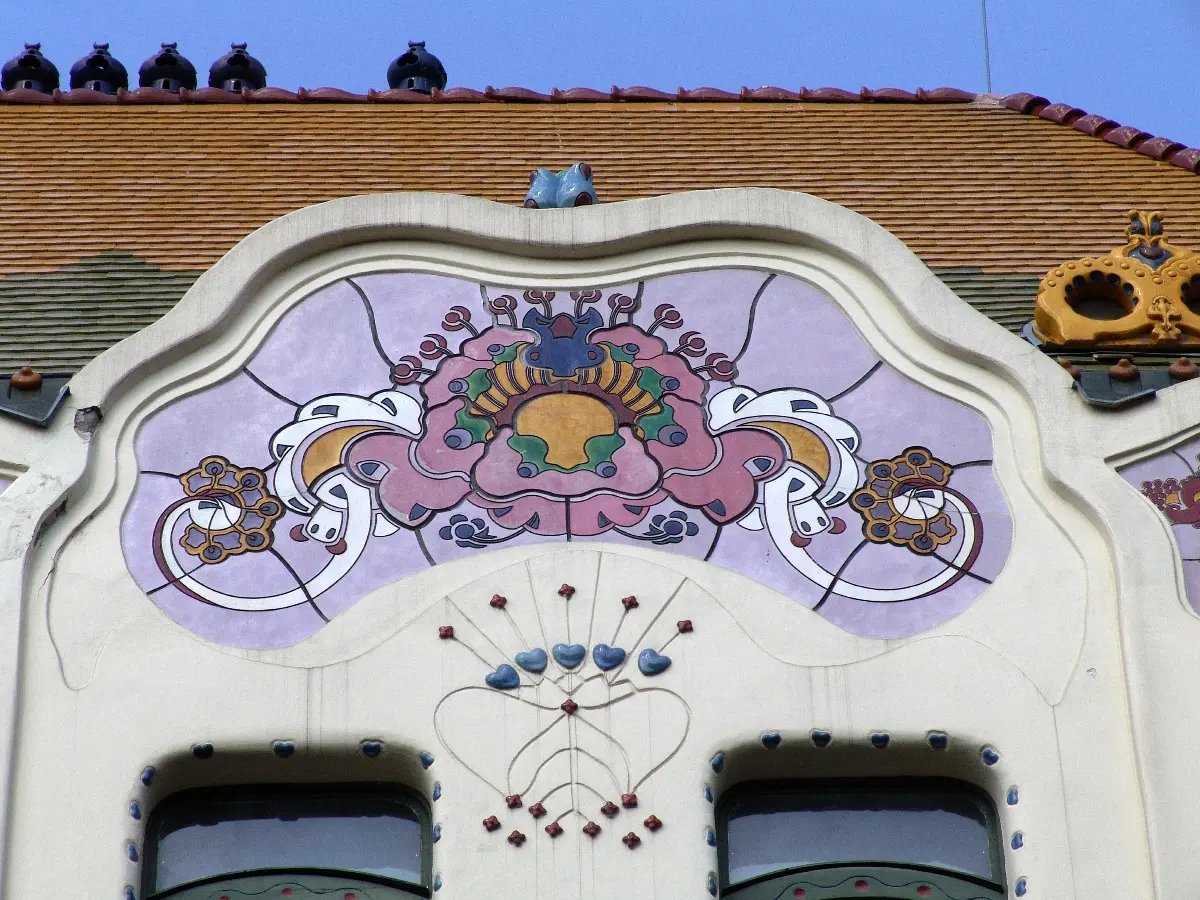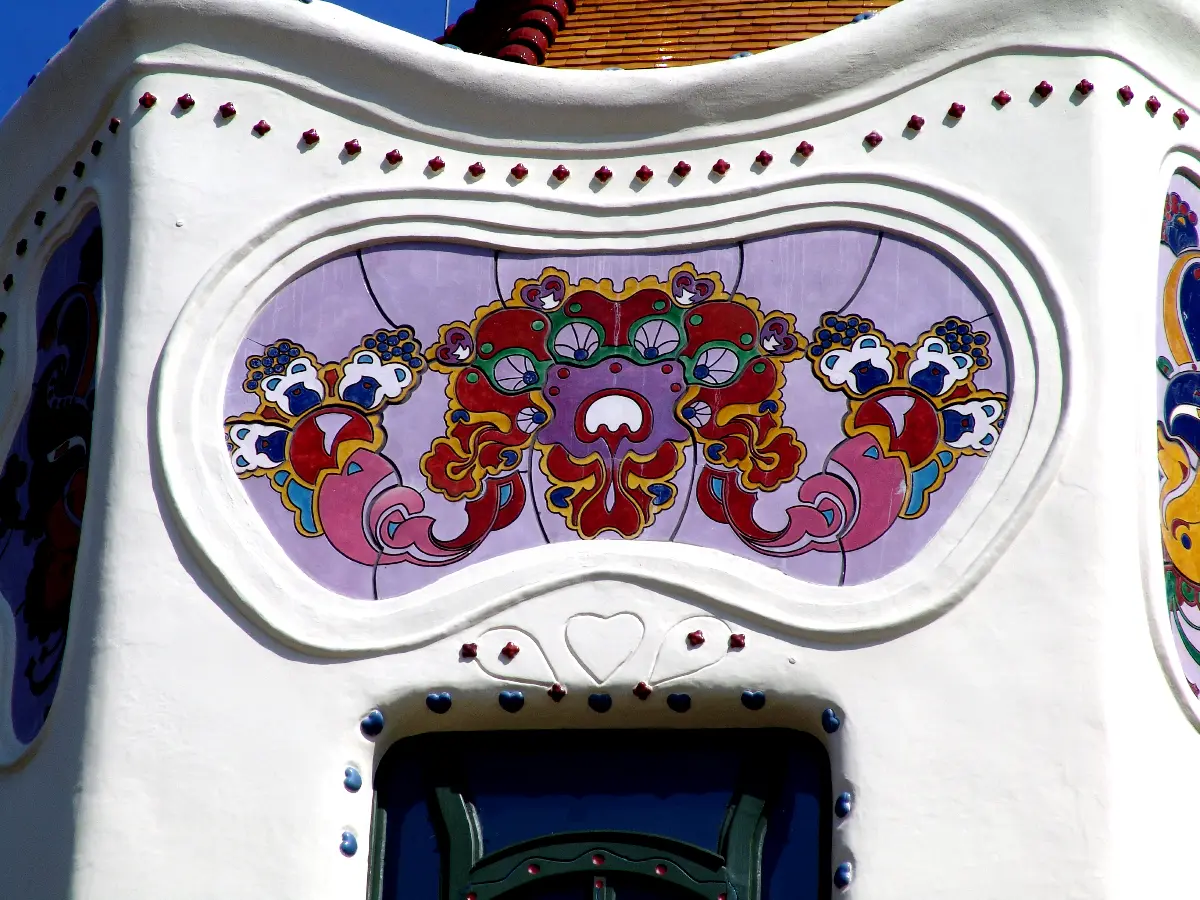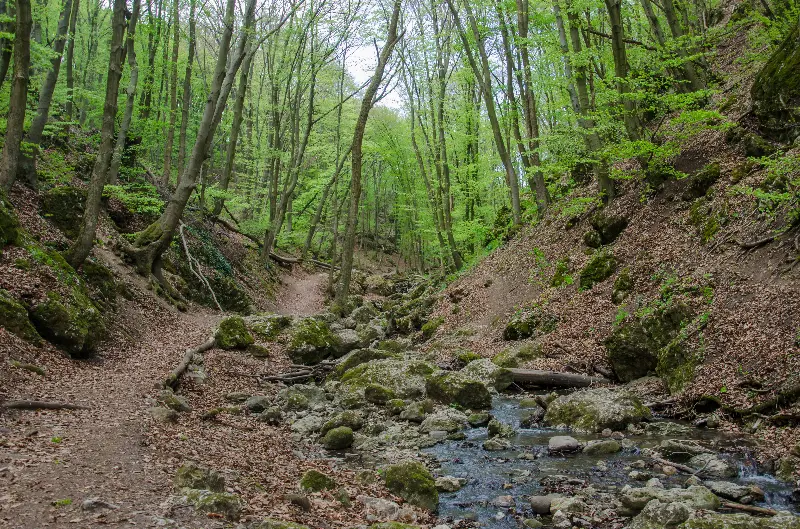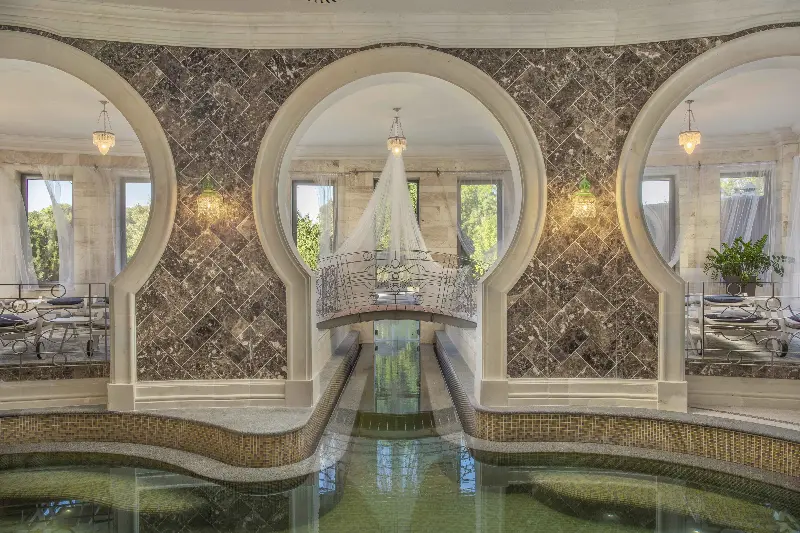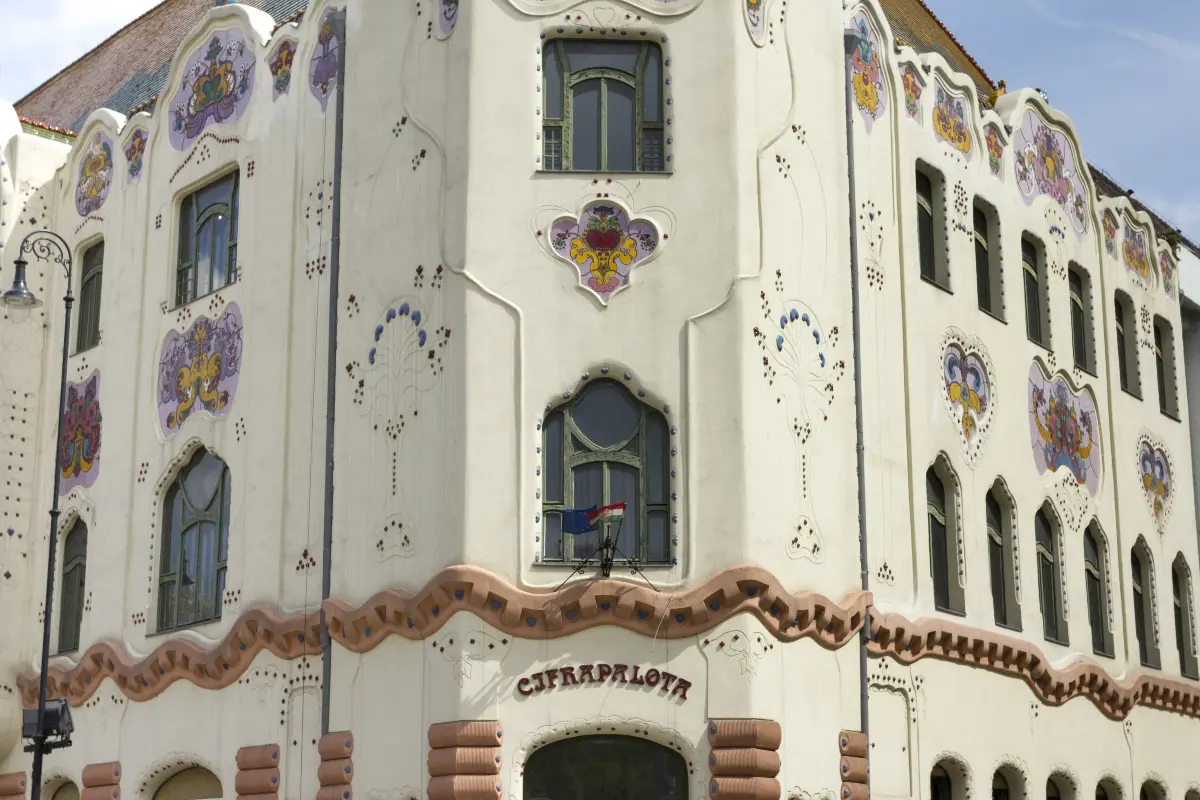
Helyszín címkék:
The fanciest house in Hungary is now a museum: the “Cifrapalota” (Fancy Palace) in Kecskemét
Bóday Csilla
The idea of the “Cifrapalota” (Fancy Palace)

At the beginning of the last century, the city leaders of Kecskemét decided to build an apartment building in the city centre. The architect Géza Márkus was commissioned to build the palace of apartments in Kecskemét. Under his leadership, the ground floor of the building was converted into a row of shops and the first floor into a casino, while the upper floors were occupied by flats. The palace was built in Art Nouveau style, but with typical Renaissance elements, while the majolica mosaic, with its floral and folk motifs, follows the Lechner school. Its ceramic decorations were made in the Zsolnay factory in Pécs. Interestingly, the interior design is less ornate, focusing mainly on the Peacock Room on the first floor. The blue and cherry red decoration, the white and gold painted plaster stuccos, even the peacock motifs follow the exaggerated style of the exterior façade. The “Cifrapalota” (Fancy Palace), having forgotten its past as a block of flats, now houses historical, ethnographic, archaeological and fine art exhibitions of the “Katona József Múzeum” (József Katona Museum) in Kecskemét. In addition to the History of Toys, as well as the History of Medicine and Pharmacy and Archaeology exhibitions, you can visit the following exhibitions in the “Cifrapalota” (Fancy Palace):
Exhibition on the Avar finds of Kiskunság
A warrior people from Inner and Central Asia, the Avars conquered the Carpathian Basin in 568. Their income came mainly from the annual gold tax, a pledge of peace from the Byzantine Empire. The impoverishment of the Avars was triggered by the unsuccessful Byzantine siege of 626, when their main source of income was cut off. The wealth of the ruling class, however, persisted for a long time.
The burials excavated by the archaeologists show that the Avar tombs were mostly looted, but the overall artefact assemblages available prove that the former Avar nobility was extremely wealthy and prosperous.
